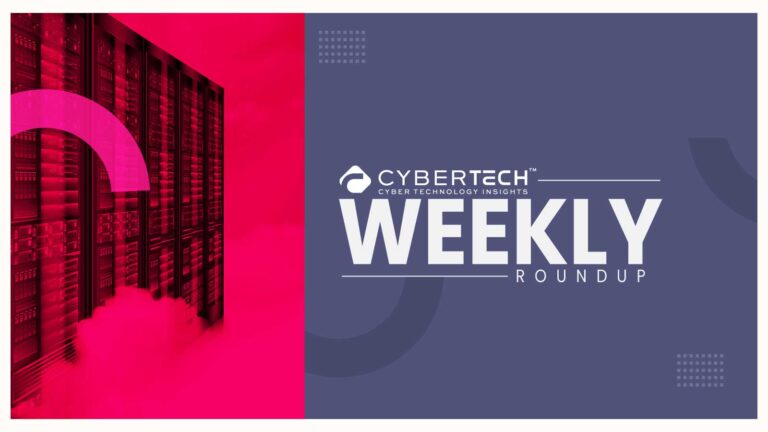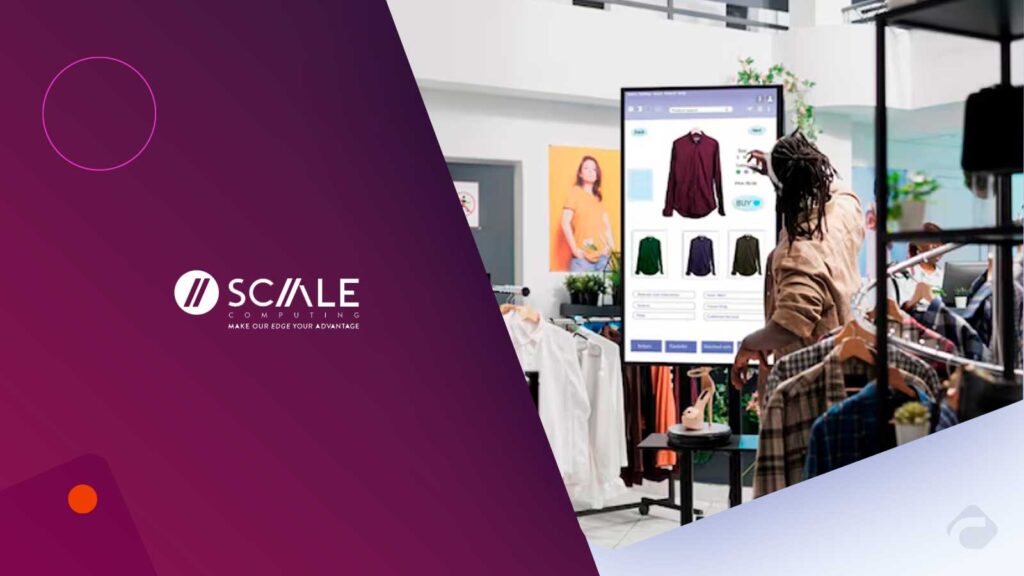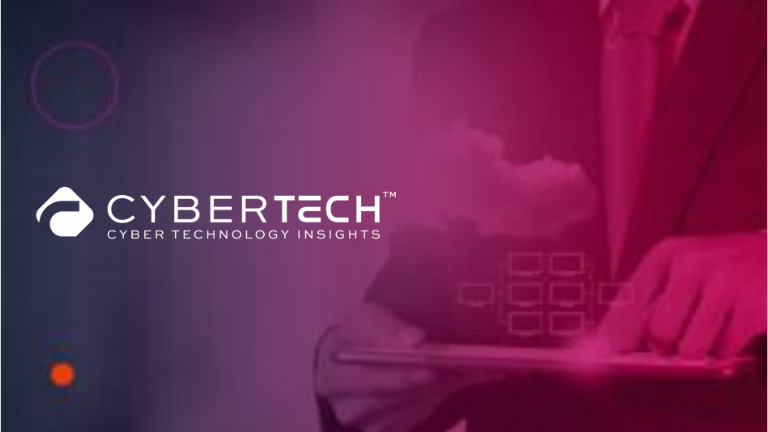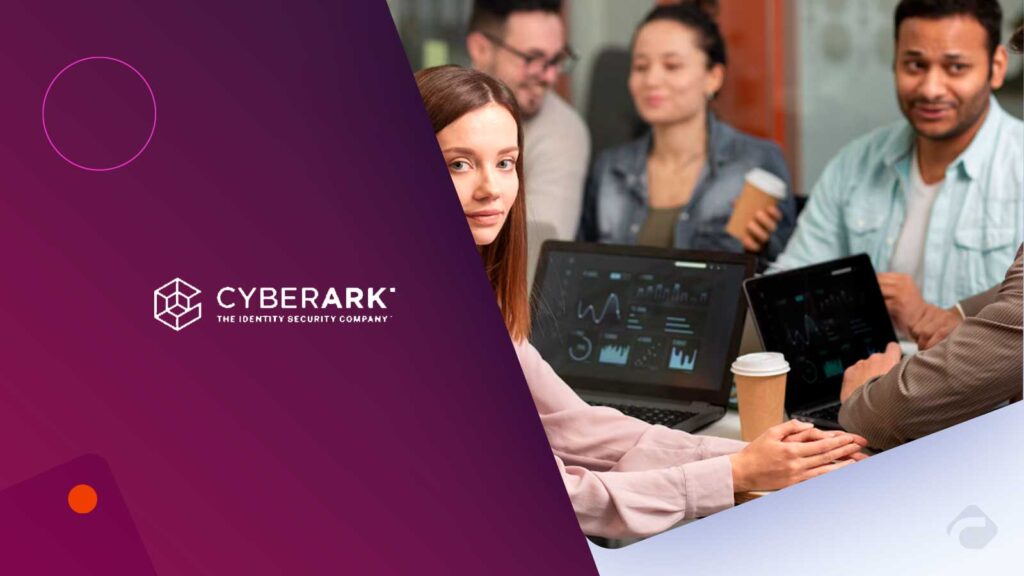Software is being built and deployed faster than ever in 2025, but as we now know, speed without security creates expensive breaches. DevSecOps resolves this challenge by embedding security directly into development and operations workflows. For B2B marketers, DevSecOps communicates product trust and brand reliability; for security leaders, DevSecOps is a way to proactively reduce risk and support innovation. As reported by Strongdm, DevSecOps adoption will reduce vulnerabilities by 60% and remediation costs by 35% by 2025. A critical strategy for any enterprise looking to maintain a focus on secure, rapid digital transformation.
What Is DevSecOps?
DevSecOps is short for Development, Security, and Operations, which is a natural evolution of the DevOps lifecycle model. In its entirety, traditional DevOps aims to accelerate software development and delivery by combining the development and operations teams. However, security was treated as an afterthought in early DevOps models. It is contributing to moments of trauma down the line, such as security vulnerabilities identified and reported toward the end of the process in the pipeline, or worse, after it has already been deployed.
DevSecOps embraces security at every phase of the software development life cycle (SDLC). which includes a variety of practices. Such as automated code scanning, container security, threat modeling, and continuous compliance throughout the life cycle. The philosophy shifts from “secure at the end” to “secure by design”.
One core principle of DevSecOps is “shifting left,” wherein security checks happen earlier in the development process. Here, fixes are more manageable. Even though it can be difficult to ultimately quantify benefits. Like time and cost, it should still prove to be faster and certainly cheaper. In practice, it means that developers receive appropriate security tools and training. Automated testing is built into the CI/CD pipeline using many automated software security tools. And everyone is helping each other through the process rather than merely appearing in front of the development. Or operations teams as a gatekeeper at the end, right before the final release stage.
The Importance of DevSecOps in 2025
The software landscape in 2025 is characterized by multicloud native architecture, AI-driven applications, and a hyper-competitive software release cycle. All of this innovation creates space for vulnerabilities introduced by container misconfigurations, AI model poisoning, and ever-more sophisticated supply-chain attacks.
According to a Cybersecurity Ventures report detailing the Global Cybercrime Economy 2025-2028. The total cost of global cybercrime will reach $15.63 trillion per year by 2028. With attacks on the software supply chain, one of the top five attack vectors facing organizations. In the past twelve months, 63% of organizations reported at least one security incident. That too due to insecure software components (Forrester 2025).
Expert Insight:
Neil MacDonald, Distinguished VP Analyst, Gartner:
“Organizations will no longer able to afford to treat security as a final stop. In 2025, DevSecOps is no longer a nice-to-have; it is a business imperative. Organizations that wait for security to be in the later stages of application development will be risking jail time, financial penalties, and reputational damage that will prevent their growth.”
For B2B marketers, DevSecOps is not just a technical framework, but it is a value proposition. Enterprises are selecting vendors, partners, and complementary industry peers based on how effectively they mitigate security risk. Marketing organizations that can articulate how their organization embeds security practices into the development of their products will find it easier to attract and retain customers.
Core Principles of DevSecOps (Detailed)
1. Shift-Left Security
Traditionally in the software development lifecycle, security reviews happen late in the release cycle. When security reviews occur late in the release cycle, any security vulnerabilities identified are usually expensive to fix, and the costs of fixing identified vulnerabilities may result in delays to product launches. DevSecOps transforms the software development lifecycle model from a traditional approach by shifting security left, thus improving the opportunity to integrate security practices earlier in the software development lifecycle.
With DevSecOps, developers run automated static application security testing (SAST) tools within their coding environments. Integrating software dependency scanning with inheritance scanning with the secure coding guidelines onboard from Day 1. The sonar and surface level of oversight help inform developers of risk. Such as third-party libraries that are susceptible to vulnerabilities, as well as finding APIs that weren’t configured securely before production. Eventually, identifying vulnerabilities earlier, and, when possible, prior to coding. Shifting left with security practices has the potential for an 80% reduction in patching costs. It was found out when compared with addressing vulnerabilities post-deployment of the software (McKinsey, 2025).
2. Automation Across the Pipeline
Speed is critical in DevOps as DevSecOps maintains it by embedding automation into each phase of security. We no longer rely on manual security reviews. Which hamper deployments and manual tools; that add a phase in a release cycle, or security functions that hinder developers? Instead, we use tooling that can be embedded into CI/CD pipelines that are delivered automatically. There are various options for automating security, which can include DAST, Infrastructure-as-Code scanning, and intended security checks for containers. Each commit, each container build, and each deployment goes through an automatic compliance check and threat detection analysis.
For example, integrating tools like Snyk, Aqua Security, or GitHub Advanced Security will ensure developers receive real-time alerts. These are actionable within their workflow, with remediation back into CI/CD pipelines. The high-level implications of automation is a much faster, consistent, and error-free assurance of security presence, scale, and veracity in association with the pace of an agile development process.
3. Continuous Monitoring and Feedback Loops
Security does not pause after the application is deployed. The application and the infrastructure it operates on, as well as the code repository, must all be continuously monitored for new threats, vulnerabilities, or configuration drift. DevSecOps promotes transparency in real-time with centralized logging, security information and event management (SIEM), and observability tools with advanced insights.
Some of the key processes are: using threat intelligence feeds being piped into monitoring systems, deploying artificial intelligence-based anomaly detection, deploying RASP (Runtime Application Self-Protection) to block active exploits, and so on. There is the ability for feedback loops using monitoring tools and security tools, which can feed back to development teams, thereby closing the gap between detection and remediation. Continuous improvement in a feedback loop like this allows continuously evolving threats to be responded to in real-time, rather than waiting for a risk-driven periodic security review months down the road.
4. Teamwork and Joint Accountability
The most significant change DevSecOps introduces is cultural; security is not the concern of one isolated team that does security. Instead, security is a shared responsibility among developers, operations, security engineers, and compliance officers.
Cross-functional training, shared performance metrics, and shared KPIs assist this teamwork. For instance, developers would take training courses showing how to code securely, operations teams would learn how to support said developers by deploying secure infrastructure, and security professionals would adjust from policing developers to enabling the usage of secure code. The result is a security-first mentality shared across the organization as ownership is on the team, where creating an accountability model reduces bottlenecks from siloed processes.
Benefits of Security to Brand Value
Improve Risk Mitigation & Response Times
By identifying and remediating vulnerabilities sooner, DevSecOps reduces the risk of a breach and increases the speed of remediation. According to Forrester (2025), DevSecOps reduces the risk of a breach and its mean time to remediate by 56% over traditional methods.
Accelerate Innovation
Automation and integrated testing allow feature delivery without delays. This allows organizations to innovate without compromising on speed. Speed is critical when it comes to success in sectors such as fintech and SaaS, where timeliness in the market differentiates suppliers.
Regulatory Compliance and Trust in Customers
Security verification in continuous delivery reduces the burden of tracking ongoing validation for regulations like GDPR, HIPAA, and also SOC 2. From a marketing perspective, this is an even greater value proposition to customers who want secure by design, innovative products. As secure by design B2B products become more common, a secure brand value adds significant value to purchasing decisions.
Improved Cross-Functional Alignment
By working together and towards a common goal, security leaders, developers, and marketers eliminate problems during the final stages of the product and delivery system, and ultimately shape a more secure, market-ready product. By building these interactions, the potential to impact brand perception improves, as well.
Challenges and Remedies
Skills Gap
There is also a significant demand for developers who can code securely. Consider investing in developer training; supply sufficient resources to support security champions in each team.
Cultural Resistance
There is almost always cultural resistance. Your teams may have a preconception that security is an obstacle to innovation. Use metrics that demonstrate how DevSecOps is increasing the number of releases while simultaneously reducing the number of incidents. Track record can be persuasive when it is measurable.
Tool Complexity
Overlapping tools inundate the DevSecOps ecosystem, and years of evaluation relating to tool costs and consequences might cloud vision. You might want to start with integrated DevSecOps platforms or cloud-native solutions, which can mature and scale over time, rather than dive in and use separate, independent products right away.
Budget Constraints
When shifting security left, budgeting for upfront training or expertise is critical; however, there is no misconception that cost benefit is given in fewer incidents, less remediation, and a faster time to market as a result of undertaking DevSecOps.
Essential Software & Technologies in DevSecOps
DevSecOps relies heavily on automation and the smooth integration of security at all stages of software delivery. The larger toolchain you choose ultimately dictates how well security can scale with the speed of development. In 2025, leaders are moving to security orchestration platforms that combine scanning, monitoring, and continued compliance into an overall security tool chain available in dashboards.
Source Code & Dependency Security
Static Application Security Testing (SAST) tools – such as SonarQube, Checkmarx, and Veracode – detect insecure coding practices at the earliest stage. Software Composition Analysis (SCA) tools, such as Snyk and WhiteSource, scan open source dependencies that constitute over 80% of application code in today’s software. By finding vulnerable libraries early, SCA tools remove the supply chain risk before it becomes a problem for the development and security teams to manage.
Container & Cloud Security
With containerization in microservices becoming the standard way in which enterprise applications are being built, best-of-breed security platforms – like Aqua Security, Prisma Cloud (formerly related to Palo Alto Networks) – offer runtime container security, Kubernetes posture management, and serverless security protection as well. These new tools can find misconfigurations, such as overly permissive Kubernetes roles, that rank as one of the top ways through which organizations are breached in cloud environments.
Security Integration of CI/CD
CI/CD systems, such as GitHub Actions, GitLab CI, and Jenkins, now include native capabilities for vulnerability scanning, secrets detection, and infrastructure-as-code (IaC) checks. This allows for every build artifact to be scanned before proceeding downstream in the development process to eliminate “blind spots” in release pipelines.
Runtime Application Protection
After deployment, Runtime Application Self-Protection (RASP) and Security Information and Event Management (SIEM) solutions, such as Datadog Security Monitoring and Splunk, can help detect active exploits in real time. These solutions can work with threat intelligence feeds so that the team is able to help mitigate zero-day attacks before they spread.
The goal is to establish a toolchain that works as an integrated approach rather than point solutions that sit in silos. This can provide unified visibility, expedited incident response, and lowered operational run time. When security certifications (e.g., SOC 2, ISO 27001) can be achieved more conveniently and communicated more easily when tools produce automated audit reports, such consistency helps products be characterized as “secure by default.”
2025 Trends Influencing DevSecOps
1. AI-Enabled Threat Hunting and Remediation
AI has now firmly established itself in the DevSecOps sector, no longer remaining in the ‘experimental’ sector. New AI-enhanced platforms use machine learning to analyze millions of code commits and configuration updates and are now spotting vulnerabilities and forecasting possible exploits with nearly a 92% accuracy rate. A select few of the state-of-the-art tools go a step further by giving suggestions for automatically remediating vulnerabilities or offering secure code patches, thus incredibly reducing the mean time to remediate (MTTR).
For example, one global SaaS provider added scanning using AI tooling into their CI/CD pipeline and saw a reduction of 30% in false positives, resulting in even more developer time being freed up and to start focusing attention on innovation versus repeating manual checks.
2. Zero-Trust CI/CD Pipelines
Zero Trust security has recently evolved from traditional network security strategies into code pipelines. Every commit, container image, and deployment is now subject to identity verification, encrypted traffic, access governance, and, eventually, this prevents malicious code that is introduced by insiders or exploited by build servers. As the attack vector seen with the 2025 SolarWinds 2.0 incident (source: IEA Cyber Threat Brief, 2025).
3. Software Bill of Materials (SBOMs) Preparation
Once a niche compliance activity, SBOMs are now requisite for industries such as healthcare, defense, and financial services. SBOMs are automatically created and maintained in DevSecOps pipelines as machine-readable artifacts, enhancing visibility of open-source dependencies from source to production. SBOMs reduce legal risk, improve customer trust, and increase scrutiny on B2B and even enterprise engagements, where transparency is now a commonplace requirement.
4. Cross-Functional Partnerships Between CMO & CISO
2025 has produced a first of it’s kind and new powerful partnership! The CMO is working with the CISO. Marketing campaigns now describe secure innovation as a unique selling proposition. Companies that promote their DevSecOps usage or capability in their thought leadership content, and sales initiatives for and proposals have reported a 15% higher closure rate on enterprise deals (McKinsey 2025). DevSecOps is fundamental to more than a technical journey. It will shape the branding perception of the company and annual revenue.
Where B2B Marketers Fit In
Security as a Differentiator
Enterprise buyers are now unwilling to buy and require proof of security before they make a purchase. This gives marketers the opportunity to turn DevSecOps into a competitive differentiator. This allows companies to position themselves as a trustworthy development partner by emphasizing security as part of the development life cycle, which is a big differentiator in industries such as fintech, SaaS, and healthcare.
Messaging Secure Innovation
Marketers can leverage the fact that they can promise Speed without jeopardizing Security. This looks promising, quick releases based on automated security tests. Also, marketers can leverage being ready for Compliance by picturing compliance with SOC 2, GDPR, or HIPAA as proof points in your campaign and in your prepared pitches to prospects. Risk mitigation as a value-added proposition: Helping show how prospective clients can lower operational and reputational risk attributes.
Educating the Market
CMOs can partner with the CISO for hosted thought leadership materials, white papers, content marketing, case studies, and also sometimes webinars that correlate with DevSecOps and the strengthening of trust. This collective narrative (speed + security) is compelling to buyers who are facing the same risks.
Crisis Management Messaging
When you consider how quickly consumers can now torpedo a brand on social media, DevSecOps enables organizations to lower the chance of having a breach and thus gives marketing teams an opportunity to portray their brand as reliable and resilient, as consumer opinion (good and bad) can strongly impact retention and upsell opportunities.
Implementation Roadmap for Getting Started with DevSecOps
1. Develop a Security-First Culture
Technology will not deliver success in isolation. Indeed, the first step will be getting people and processes in alignment. Run secure coding workshops, build “security champions” in the dev teams, and make sure security KPI are part of performance metrics.
2. Evaluate Maturity
Assess DevSecOps maturity and identify key maturity gaps, such as missing CI/CD security automation, missing CI/CD compliance reporting, or even manual assurance methods. This baseline will help formulate the roadmap and prioritize actions.
3. Start Small, Scale Quickly
Use less friction developer initiatives first, such as static code analysis and dependency scanning, and then move to runtime security and automation for SBOM before scaling up automated security, compliance, and large-scale automation. This way, you are not creating a situation with an exhausted team whilst also demonstrating wins early.
4. Automate and Orchestrate
Use integrated products to improve your pipeline across the CI/CD security chain to allow automated scanning, reporting, and eventually alarming for security anomalies. Use orchestration tools to bridge security product-based silos and also provide a single pane of glass for security teams in producing and monitoring applications.
5. Create Feedback Loops
Make sure that production telemetry (logs, security alerts, security anomalies, etc.) can feed back into development teams to create a practice of iteratively improving how quickly and effectively developers can fix things and think dynamically about threat modeling.
6. Measures That Matter
Keep track of your Mean Time to Detect (MTTD) and Mean Time to Remediate (MTTR) for vulnerabilities, and regularly calculate your Percentage of issues caught in pre-production as well as your eventual Compliance audit pass rates.
The regular measurement of these activities helps improve internal performance while allowing marketers to use credible data points for messaging externally.
Conclusion
Whether you’re a CISO aiming to strengthen your security posture or a CMO seeking a competitive messaging advantage, DevSecOps is the bridge. It aligns teams, strengthens trust, and turns secure innovation into a differentiator that resonates with today’s enterprise buyers.
The time to act is now: start with culture, integrate tools strategically, measure progress, and communicate security as a core brand value. In a digital-first economy, DevSecOps isn’t just about protecting software; it’s about protecting your reputation, revenue, and long-term growth.
FAQs
1. Is DevSecOps only for large enterprises, or can startups adopt it too?
DevSecOps is for organizations of all sizes. Startups can begin with simple automated security checks in their CI/CD pipeline and scale as they grow.
2. Does adopting DevSecOps slow down software releases?
No, when implemented correctly, DevSecOps speeds up releases by catching issues early and reducing last-minute delays from security problems.
3. Is DevSecOps expensive to implement?
Initial training and tool investments are required, but most organizations see cost savings in the long run because fixing vulnerabilities early is cheaper than handling breaches later.
4. Can DevSecOps help with compliance audits?
Yes, automated security checks and continuous compliance reporting make audits like SOC 2, ISO 27001, or HIPAA faster and easier to pass.
5. Do marketers really need to understand DevSecOps?
Yes, understanding DevSecOps helps marketers communicate product trust and security as part of their messaging, which is increasingly a key factor in winning enterprise deals.
To participate in upcoming interviews, please reach out to our CyberTech Media Room at sudipto@intentamplify.com.







